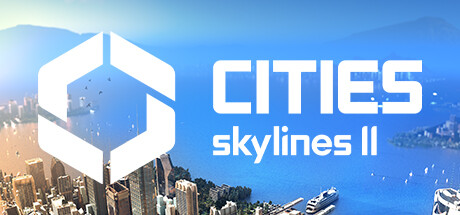Patch 1.0.19 came out last Wednesday and you can find the full patch notes here. More bug fixes will be patched into the game with the first modding support features - code modding and Paradox Mods - as soon as they are ready for Public Beta. Now that’s a Word of the Week I can’t wait to write! Steadily working on the game and bringing improvements to it is now the best way to showcase our commitment to Cities: Skylines II and you the community.
We have been wondering what type of information would be relevant for you to hear about and that we can share freely while waiting for confirmation on the updates for the game. Therefore I asked co_avanya to provide a list of questions we have received since the release that take a bit more time and effort to answer than a quick reply on social media. Together with the team, we looked at your questions about how the Industry and Goods simulation works, and here are the answers.
How do importing and exporting actually work and what are the thresholds for exporting goods?
The city can import and/or export goods when sufficient connections to the outside connections have been created. Some city service buildings also require resources to operate. These buildings can import those resources from outside connections if the companies in the city can't provide enough of that resource. The city’s companies can also import or export resources as they see fit, which depends on many different factors. The threshold for exporting goods is whether the company is able to make more money by exporting those goods or if it earns more profit by selling them to companies in the city. Additionally, when the companies’ storage capacity goes under 50% they start to import resources from outside connections.
So what is the flow of the resources in the city?
Industrial and commercial companies move into the city with starting resources, while storage companies start empty. That way the new companies don’t need to wait for the first resource transportation before they can start operating. The companies won’t get more “free” resources after that so they need resource deliveries to operate. Companies need one or more input resources to work and they can get the needed resources from the city’s industry factors or outside connections. The companies use the employees to generate production and refine the input resources into new resources (output) which can then be shipped to outside connections, other manufacturing companies, warehouses, commercial companies, offices, or directly to households. The new resources will be shipped either directly by trucks or by transporting them to cargo terminals. Cargo terminals can transport resources within the city as well as to outside connections.
Here is an example of wood’s possible production chain. There are three options where to get the wood in the first phase: forestry extractor, outside connections, or a storage that includes wood. One of these options sends the wood resource to a sawmill. The sawmill uses the wood to produce timber. Timber can then be sent to a paper mill which uses timber to produce paper, which in turn can be exported, sent to a warehouse, or sent to a bookstore. A bookstore then stores the paper until a customer comes in and shops there. The bookstore's storage on paper is reduced and the customer’s household gains resources. Households only have resources and do not count individual resource types. This means that they do not look at how much "paper" they have, just only how much resources they have.

An important part of a successful production chain process is resource transportation. The physical resources (goods) are always carried by truck in the end and they’re deducted from the storage when a pickup is scheduled, so trucks don’t travel in vain. When a building spawns a delivery truck to send out its output resource, the storage should go down, but there’s currently an issue with the synchronization, so the resource is deducted before the truck spawns. We’re aware of this issue and looking into a fix, so things are synced up correctly. It’s also worth noting that if the vehicle carrying the resource is stuck then it will despawn and those resources are sent back to the owner's building where it will try to send a new vehicle to forward those resources.
The system tries to always go with the physical transportation of goods, especially when it comes to business-to-business. With citizens the requirement is less strict and they can either go to a place to buy goods or they can basically order them through the teleport (representing online shopping), so to speak. Teleporting is a secondary option but sometimes the agents just can't get to the place they would go to buy their resources and in these cases, the resources are teleported to their household.
What about if the city has a deficit or surplus of some product?
During the deficit, there should be more companies spawning that can produce the resource that is in deficit. If some product is in deficit, it means that the citizens and/or companies are consuming more of that resource than the city is producing. In that case, the city is importing that product more from outside connections which can create more traffic. During surplus, the opposite happens, where the city is producing more of the resource than the citizens or companies are using so the extra products are exported to outside connections.
That’s it for today's Word. Did you enjoy reading more about the inner workings of the game? I’ll come back next week with a new Q&A. We have a handful of other topics in mind that we can cover, and you are of course very welcome to share any game topics or questions you are wondering about. Until then, have a lovely week!
Sincerely,
Mariina
